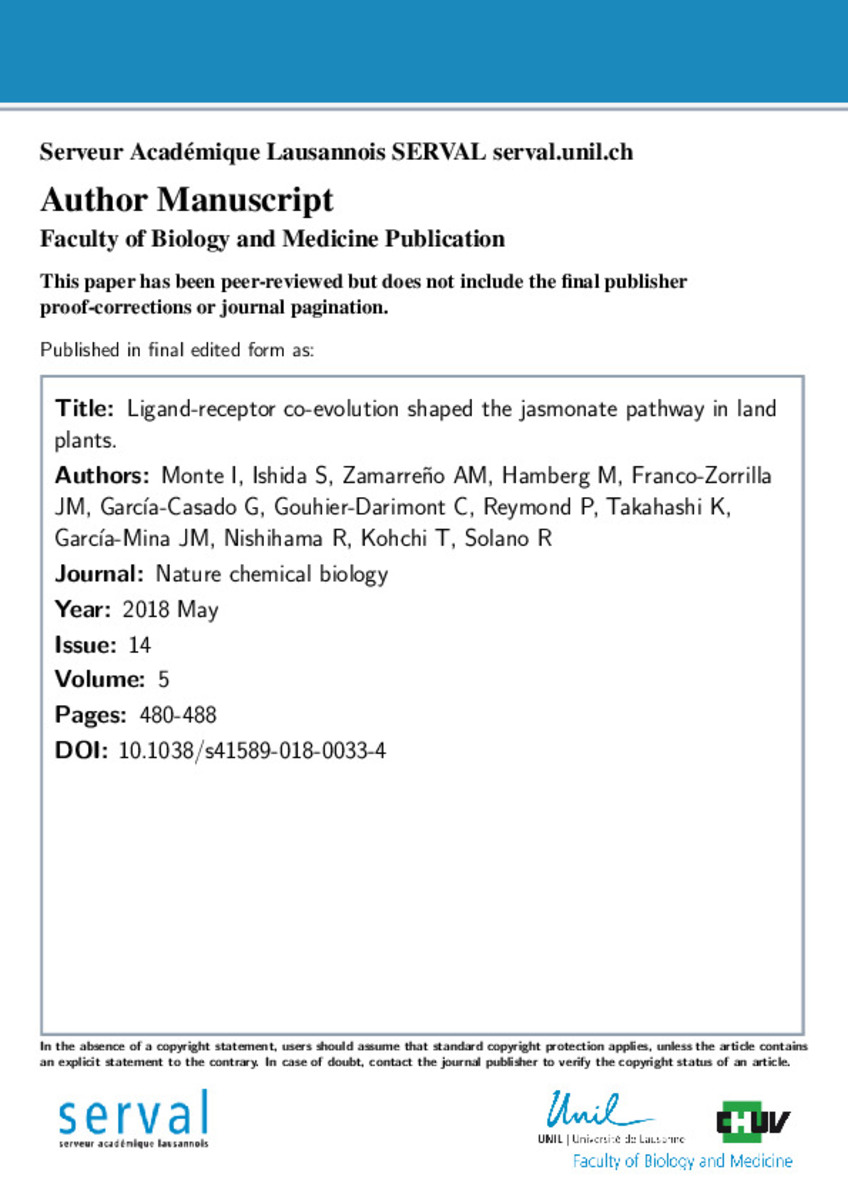Ligand-receptor co-evolution shaped the jasmonate pathway in land plants
Palabras clave :
Phytohormone jasmonoyl-isoleucine (JA-Ile)
Vascular plants
Bryophytes
Fecha de publicación :
2018
Editorial :
Nature Research
Cita:
Monte, I. (Isabel); Ishida, S. (Sakiko); Zamarreño, A.M. (Angel Maria); et al. "Ligand-receptor co-evolution shaped the jasmonate pathway in land plants". NATURE CHEMICAL BIOLOGY. 14 (5), 2018, 480 - 488
Aparece en las colecciones:
Estadísticas e impacto
0 citas en

0 citas en

Los ítems de Dadun están protegidos por copyright, con todos los derechos reservados, a menos que se indique lo contrario.











